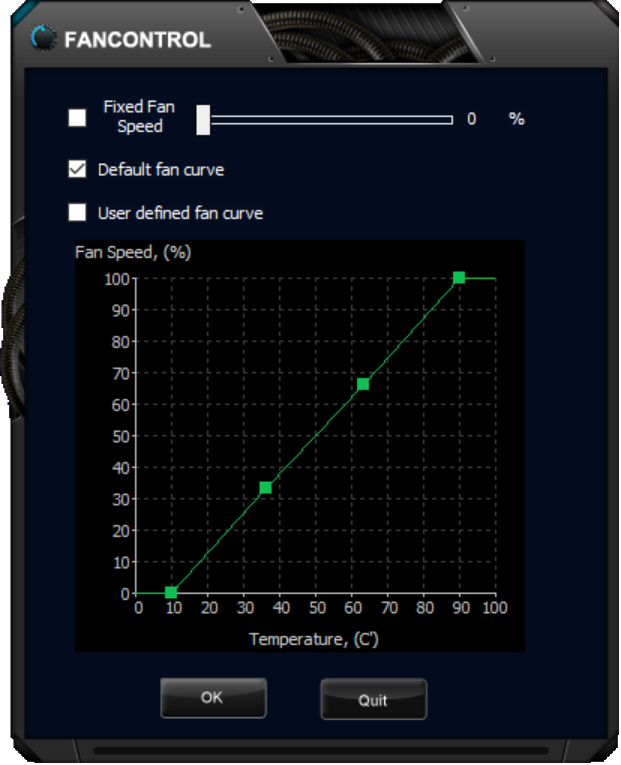Index
Thermals, Noise, Overclocking and Power Consumption
The new Phoenix cooler is superior to the reference design as it keeps the GPU temperatures below 75 degrees Celsius. The Phoenix cooler ensures the card maintains the maximum Boost clock possible for as long as possible. The new Boost 3.0 algorithm will reduce the GPU Boost clocks on the GTX 1080 if the GPU temperature goes over 83 degrees Celsius, but the Phoenix cooler keeps the GPU temperature significantly lover.
The card is completely silent in idle and during media playback or light gaming despite the fact that the card doesn't turns its fans off when GPU temperature is below 60 degrees Celsius, like the GTX 980 Ti Phoenix. The GTX 1080 Phoenix cooler is quiet, almost inaudible, even under load.The Gainward's own EXPERTool utility adds some features for GTX 1080 Phoenix board such as changing fan curve and BIOS saving function. We could not hear coil whine.


The Gainward GTX 1080 Phoenix GLH works at a 1747MHz base clock, while the reference GPU base clock is set at 1607MHz. The overclocking potential is good considering that this is a factory overclocked card. Using standard voltage and AUTO fan settings we managed to push the GPU 120MHz over the factory clocks. This resulted in a 6-8% performance gain in our games. The card remained silent even after our additional overclocking.
Power consumption increases slightly after overclocking, but only by 22W. Without overclocking GTX 1080 Phoenix GLH consumes only 4W more than a GTX 1080 Founders Edition. In general the GTX 1080 requires about 166 watts in typical gaming. This is pretty amazing since the card has the same power requirements as the Geforce GTX 980.




